This article needs additional citations for verification .(November 2017) |
Working in layers is a system for creating artistic paintings that involve the use of more than one layer of paint.
This article needs additional citations for verification .(November 2017) |
Working in layers is a system for creating artistic paintings that involve the use of more than one layer of paint.
Working in layers is used extensively in oil painting for paintings that require more than one session. For a painting that develops over several days, allowing for the oil paint to dry for a given layer, it is helpful to work with explicit painting layers. The first layer may be a ground, usually applied all over the surface. Then an underdrawing in outline may follow. Then comes underpainting, overpainting, and finally semi-transparent glazes and varnish. All of these layers will affect the appearance of the final painting. To understand the role of underpainting, one can use metaphor and think of the underpainting as a base-rhythm in music, and the overpainting as a solo played over this. Areas not underpainted, outlining the space for a figure for example, are said to be reserved.
Working in layers has been utilized by many schools of art over many centuries. For example, in the early 15th century Cennino D'Andrea Cennini describes how to paint in layers in the egg tempera medium. [1]
Modern techniques such as X-rays and infra-red reflectograms often enable lower layers of paint and underdrawing to be seen, and reveal pentimenti, or changes of mind by the artist in the course of work. [2] [3]

Oil painting is the process of painting with pigments with a medium of drying oil as the binder. Commonly used drying oils include linseed oil, poppy seed oil, walnut oil, and safflower oil. The choice of oil imparts a range of properties to the paint, such as the amount of yellowing or drying time. The paint could be thinned with turpentine. Certain differences, depending on the oil, are also visible in the sheen of the paints. An artist might use several different oils in the same painting depending on specific pigments and effects desired. The paints themselves also develop a particular consistency depending on the medium. The oil may be boiled with a resin, such as pine resin or frankincense, to create a varnish prized for its body and gloss. The paint itself can be molded into different textures depending on its plasticity. Before oil painting was fully discovered egg tempera was commonly used. Tempera did not have the flexibility in pigment that oil paints provided.
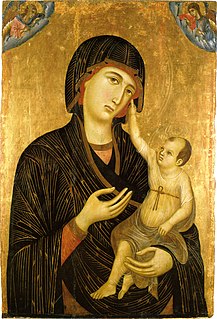
Tempera, also known as egg tempera, is a permanent, fast-drying painting medium consisting of colored pigments mixed with a water-soluble binder medium, usually glutinous material such as egg yolk. Tempera also refers to the paintings done in this medium. Tempera paintings are very long-lasting, and examples from the first century AD still exist. Egg tempera was a primary method of painting until after 1500 when it was superseded by oil painting. A paint consisting of pigment and binder commonly used in the United States as poster paint is also often referred to as "tempera paint", although the binders in this paint are different from traditional tempera paint.

Ultramarine is a deep blue color pigment which was originally made by grinding lapis lazuli into a powder. The name comes from the Latin ultramarinus, literally "beyond the sea", because the pigment was imported into Europe from mines in Afghanistan by Italian traders during the 14th and 15th centuries.

Agnolo Gaddi (c.1350–1396) was an Italian painter. He was born and died in Florence, and was the son of the painter Taddeo Gaddi.

Oil paint is a type of slow-drying paint that consists of particles of pigment suspended in a drying oil, commonly linseed oil. The viscosity of the paint may be modified by the addition of a solvent such as turpentine or white spirit, and varnish may be added to increase the glossiness of the dried oil paint film. Oil paints were first used in Asia as early as the 7th century AD and can be seen in examples of Buddhist paintings in Afghanistan. Oil-based paints made their way to Europe by the 12th century and were used for simple decoration, but did not begin to be adopted as an artistic medium there until the early 15th century. Common modern applications of oil paint are in finishing and protection of wood in buildings and exposed metal structures such as ships and bridges. Its hard-wearing properties and luminous colors make it desirable for both interior and exterior use on wood and metal. Due to its slow-drying properties, it has recently been used in paint-on-glass animation. The thickness of the coat has considerable bearing on the time required for drying: thin coats of oil paint dry relatively quickly.

Grisaille is a painting executed entirely in shades of grey or of another neutral greyish colour. It is particularly used in large decorative schemes in imitation of sculpture. Many grisailles include a slightly wider colour range. Paintings executed in brown are referred to as brunaille, and paintings executed in green are called verdaille.
In art, an underpainting is an initial layer of paint applied to a ground, which serves as a base for subsequent layers of paint. Underpaintings are often monochromatic and help to define color values for later painting. There are several different types of underpainting, such as veneda, verdaccio, morellone and grisaille.
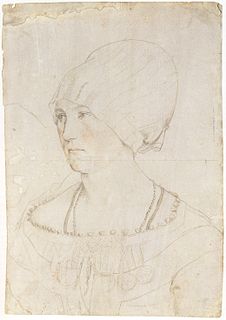
Silverpoint is a traditional drawing technique first used by medieval scribes on manuscripts.

Cennino d'Andrea Cennini was an Italian painter influenced by Giotto. He was a student of Agnolo Gaddi in Florence. Gaddi trained under his father, called Taddeo Gaddi, who trained with Giotto.
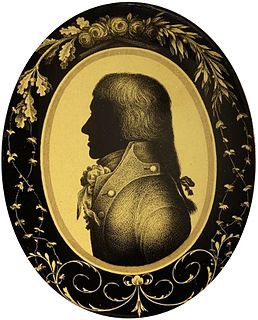
Verre églomisé is a French term referring to the process of applying both a design and gilding onto the rear face of glass to produce a mirror finish. The name is derived from the 18th-century French decorator and art-dealer Jean-Baptiste Glomy (1711–1786), who was responsible for its revival.

A pentimento, in painting, is "the presence or emergence of earlier images, forms, or strokes that have been changed and painted over". The word is Italian for 'repentance', from the verb pentirsi, meaning 'to repent'.

A panel painting is a painting made on a flat panel made of wood, either a single piece, or a number of pieces joined together. Until canvas became the more popular support medium in the 16th century, it was the normal form of support for a painting not on a wall (fresco) or vellum, which was used for miniatures in illuminated manuscripts and paintings for the framing.
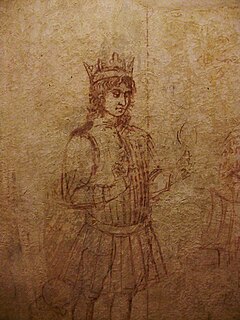
Sinopia is a dark reddish-brown natural earth pigment, whose reddish colour comes from hematite, a dehydrated form of iron oxide. It was widely used in Classical Antiquity and the Middle Ages for painting, and during the Renaissance it was often used on the rough initial layer of plaster for the underdrawing for a fresco. The word came to be used both for the pigment and for the preparatory drawing itself, which may be revealed when a fresco is stripped from its wall for transfer.
Terra Verde is a relatively new style of syncopated piano music, which originated in the United States. The term "Terra Verde" was coined in 1995 by modern ragtime composer David Thomas Roberts.

Overpainting can mean the final layers of paint, over some type of underpainting, in a system of working in layers. It can also mean later paint added by restorers, or an artist or dealer wishing to "improve" or update an old image—a very common practice in the past. The underpainting gives a context in which the paint-strokes of the overpainting become more resonant and powerful. When properly done, overpainting does not need to completely obscure the underpainting. It is precisely the interaction of the two that gives the most interesting effects.
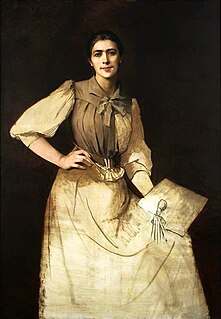
Underdrawing is a preparatory drawing done on a painting ground before paint is applied, for example, an imprimatura or an underpainting. Underdrawing was used extensively by 15th century painters like Jan van Eyck and Rogier van der Weyden. These artists "underdrew" with a brush, using hatching strokes for shading, using water-based black paint, before underpainting and overpainting with oils. Cennino D'Andrea Cennini describes a different type of underdrawing, made with graded tones rather than hatching, for egg tempera.
Mischtechnik or mixed technique is a term spanning various methods of layering paint, including the usage of different substances. The term gained popularity after Max Doerner's 1921 book The Materials of the Artist and Their Use in Painting: With Notes on the Techniques of the Old Masters However, Doerner made some conclusions about the usage by painters and Mischtechnik which today are no longer considered completely accurate.
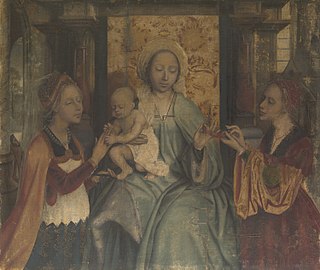
Glue-size is a painting technique in which pigment is bound (sized) to cloth with hide glue, and typically the unvarnished cloth was then fixed to the frame using the same glue. Glue-size is also known as distemper, though the term "distemper" is applied variously to different techniques. Glue-size was used because hide glue was a popular binding medium in the 15th century, particularly among artists of the Early Netherlandish period, who used it as an inexpensive alternative to oil. Although a large number of works using this medium were produced, few survive today, mainly because of the high perishability of linen cloth and the solubility of hide glue. Well-known and relatively well-preserved — though substantially damaged — the most notable examples include Quentin Matsys' Virgin and Child with Saints Barbara and Catherine and Dirk Bouts' Entombment. In German the technique is known as Tüchleinfarben, meaning “small cloth colours”, or Tüchlein, derived from the German words Tüch and Lein.

The St Catherine Altarpiece is a set of panel paintings from the period around 1515 that is ascribed to the workshop of the Master of the Litoměřice Altarpiece. A total of six panel paintings survive from the original retable: one wing painted on both sides and two panels painted on one side in the collection of the National Gallery in Prague and two panels in the private collection of G. Schäfer (Schweinfurt).

Saint Luke the Evangelist is one of the most impressive panel paintings by Master Theodoric, intended for the decoration of the Chapel of the Holy Cross in Karlštejn. It may be a self-portrait of Theodoric himself. It is exhibited in the collection of medieval art of the National Gallery in Prague.